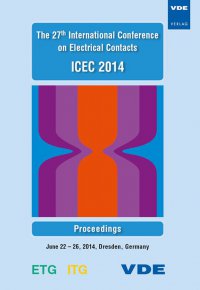Formation and properties of intermetallic compounds in an Al-Cu roll-bonded connection
Konferenz: ICEC 2014 - The 27th International Conference on Electrical Contacts
22.06.2014 - 26.06.2014 in Dresden, Deutschland
Tagungsband: ICEC 2014
Seiten: 6Sprache: EnglischTyp: PDF
Persönliche VDE-Mitglieder erhalten auf diesen Artikel 10% Rabatt
Autoren:
Hilz, E.; Dudziak, S. (Corporate Sector Research and Advance Engineering Robert Bosch GmbH, Schwieberdingen, Germany)
Schmid-Fetzer, Rainer (Institute of Metallurgy, Clausthal University of Technology, Clausthal-Zellerfeld, Germany)
Inhalt:
Al-Cu clad materials are widely used in electrical applications. It is well-known that intermetallic compounds (IMC) are formed in bimetal joints due to interdiffusion under thermal and electrical loads. This results in degradation of the connection, since the IMC have higher electric resistance and brittle character. Therefore a good understanding of the formation and growth mechanism of IMC is crucial for the prediction of the contacts’ long-term behaviour. As some disagreements were observed in published results on phase formation and properties, new investigations were carried out on a roll-bonded Al-Cu connection. These results are presented and discussed in this paper. Growth kinetics and characteristics of appearing IMC during annealing were examined. Four IMC have been identified in the interface by means of XRD, EDX. Furthermore the indentation hardness and elastic modulus were measured using micro- and nanohardness systems. In order to characterize mechanical and electrical properties of each IMC, as well as for a better specification and modeling of an aged Al-Cu interface in a composite material, phase-pure IMC were produced of pure elements by vacuum induction melting. In comparison to base materials, Al and Cu, the IMC exhibit higher hardness and electrical resistance.


